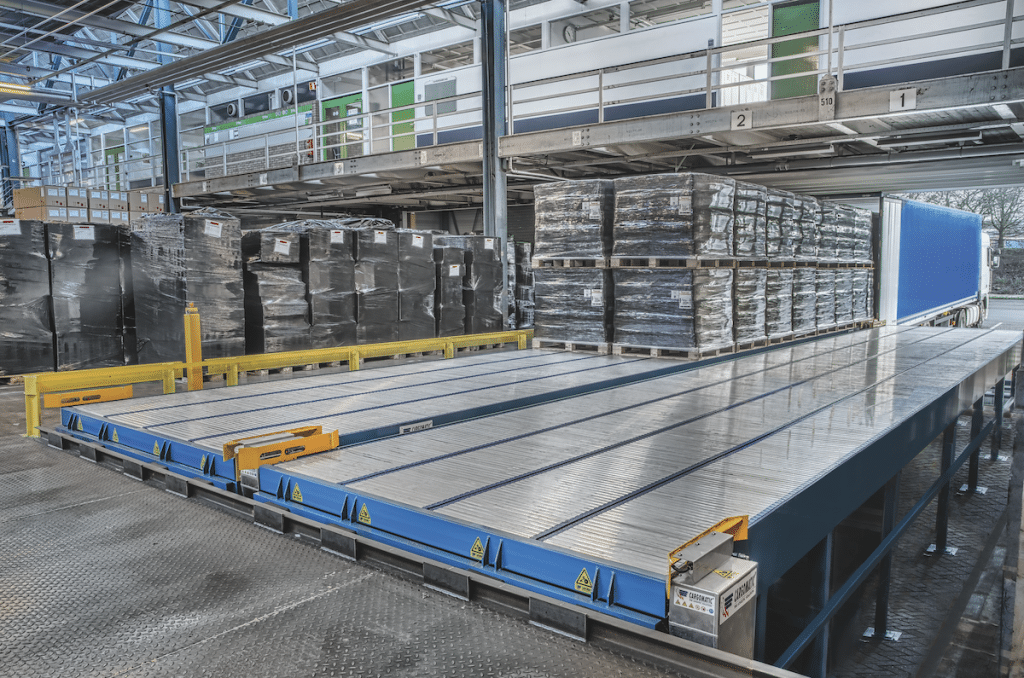 Automated Blog-to-Social Sharing – Publish Once. Appear Everywhere!
Automated Blog-to-Social Sharing – Publish Once. Appear Everywhere!
Wafer Handling Robots: Revolutionizing the Semiconductor Industry
Written by Neenu » Updated on: June 17th, 2025


Introduction:
In the world of semiconductor manufacturing, precision, speed, and cleanliness are paramount. One of the most critical aspects of semiconductor production is wafer handling — the process of moving, aligning, and processing silicon wafers. Traditionally, this task has been carried out using manual labor or conventional automated systems, but the rise of wafer handling robots has significantly transformed the industry.
This article provides a comprehensive look into the role of wafer handling robots, comparing them with traditional wafer handling methods, and explaining why robots are becoming the preferred choice for many semiconductor manufacturers.
What is Wafer Handling?
Wafer handling refers to the movement and management of silicon wafers throughout the manufacturing process. Wafers are delicate and must be handled with extreme care to avoid contamination, defects, or breakage. They pass through various stages, including cleaning, photolithography, etching, doping, and packaging, during which precision and cleanliness are critical.
In the semiconductor industry, the demand for miniaturization, higher performance, and increased functionality has led to ever smaller and more complex wafers. As a result, the need for highly accurate, fast, and contamination-free wafer handling systems has become more important than ever.
Traditional Wafer Handling Methods
Historically, wafer handling has been carried out using a combination of manual labor and automated systems such as mechanical arms, conveyor belts, and vacuum-based systems. Let’s break down some of the traditional methods used in wafer handling.
1. Manual Wafer Handling
In earlier semiconductor manufacturing processes, human operators were responsible for moving and positioning wafers in various machines. While this method offered flexibility, it was prone to human error, contamination (due to improper gloves or handling), and slower processing speeds. Manual handling was also limited in terms of scalability and precision, especially in high-volume production environments.
2. Mechanical Arm Systems
Mechanical arm systems, often equipped with vacuum grippers or pincers, have been used for automated wafer handling. These systems are typically designed to pick up and place wafers between various stages of production. While more efficient than manual labor, mechanical arm systems still pose certain challenges. These include limited flexibility, the inability to handle delicate wafers without risk of damage, and sometimes slower cycle times compared to modern robotic systems.
3. Conveyor Belt Systems
Conveyor belts have also been widely used for transporting wafers between different stations on a production line. While conveyors can be automated to run continuously, they require additional mechanisms, such as robotic arms or vacuum manipulators, to handle wafers safely and accurately at different stages. These systems often lack the precision and adaptability of modern robotic solutions, especially in environments that demand high-throughput and zero-tolerance contamination control.
Wafer Handling Robots: The Next Generation of Automation
In recent years, wafer handling robots have emerged as a game-changer in the semiconductor industry. These robots are designed to perform wafer handling tasks with greater precision, speed, and flexibility than traditional methods. Equipped with advanced sensors, machine vision systems, and AI-powered control, wafer handling robots can operate autonomously and adapt to dynamic production conditions.
Types of Wafer Handling Robots
1.Articulated Robots
Articulated robots, also known as robotic arms, are designed with multiple joints that give them a wide range of motion. These robots can perform complex movements, making them ideal for tasks such as wafer pick-and-place, alignment, and transport. Articulated robots are often used in environments where wafers need to be handled delicately or where space is limited.
2.SCARA Robots
Selective Compliance Assembly Robot Arm (SCARA) robots are another popular type of robotic solution for wafer handling. SCARA robots are known for their speed and precision in pick-and-place applications. Their unique design, which includes a rigid vertical axis and flexible horizontal axis, allows them to quickly and accurately handle wafers in a controlled manner. SCARA robots are especially useful for high-throughput wafer handling.
3.Delta Robots
Delta robots are parallel robots, which means they use multiple arms arranged in a triangular configuration to manipulate wafers. These robots are incredibly fast and efficient, making them ideal for high-speed pick-and-place operations in cleanroom environments. Delta robots are often used in wafer sorting, inspection, and packaging.
4.Collaborative Robots (Cobots)
Collaborative robots, or cobots, are designed to work alongside human operators in a shared workspace. While they typically handle tasks such as wafer transport or simple assembly, cobots are particularly valuable in situations where human intervention is still required. Their ability to safely operate in close proximity to humans makes them ideal for certain wafer handling applications, especially in environments where flexibility and adaptability are important.
Robots vs. Traditional Wafer Handling Methods: A Comparative Analysis
1. Speed and Efficiency
One of the most significant advantages of wafer handling robots is their speed and efficiency. Robots can operate continuously, without the need for breaks or shifts, enabling them to maintain high throughput in a 24/7 production environment. Articulated robots, SCARA robots, and delta robots, in particular, can move and manipulate wafers much faster than manual labor or conveyor systems. This reduction in cycle time allows for greater productivity and faster time-to-market for semiconductor products.
In contrast, traditional wafer handling methods, such as manual labor or mechanical arms, are more susceptible to bottlenecks. Manual labor can be slow and inconsistent, while mechanical arms often require precise calibration and human intervention to optimize performance.
2. Precision and Accuracy
Precision is critical in wafer handling, as even minor errors can result in wafer defects or contamination. Wafer handling robots excel in this area due to their advanced control systems, sensors, and machine vision capabilities. Robots can handle wafers with micron-level accuracy, ensuring they are perfectly aligned and positioned during each phase of the manufacturing process.
Traditional methods, on the other hand, are often less accurate. Manual handling is prone to human error, and even mechanical arms can struggle to achieve the same level of precision as a robotic system. Although conveyor systems are accurate, they often require additional equipment (such as vision systems or robotic arms) to perform delicate wafer handling tasks.
3. Contamination Control
In semiconductor manufacturing, contamination can result in significant yield loss. Robots are equipped with advanced contamination control features, such as particle-resistant materials and cleanroom-compatible designs, which help maintain the purity of the wafers during handling. These robots can operate in controlled environments, such as ISO-certified cleanrooms, where they minimize the risk of contamination by avoiding direct contact with the wafers and using ultra-clean processes.
In contrast, traditional wafer handling methods are more susceptible to contamination. Manual handling introduces the risk of human error, such as improper glove usage or accidental contact with contaminants. Mechanical arm systems and conveyor belts also pose contamination risks, as their components can wear out over time, shedding particles into the cleanroom environment.
4. Flexibility and Adaptability
Wafer handling robots are highly flexible and can be easily programmed to handle different wafer sizes, shapes, and configurations. They can also be quickly reconfigured to accommodate changes in production requirements or new wafer types. This adaptability makes robots a valuable asset in semiconductor production lines that require frequent changeovers or handle a wide variety of wafers.
Traditional systems, while effective for specific tasks, are less adaptable. Manual labor, for instance, requires extensive training to handle different wafer sizes, and mechanical systems often need to be retooled for different production runs, which can result in downtime and increased costs.
5. Cost and ROI
While the initial investment in wafer handling robots may be higher than traditional systems, the long-term benefits often outweigh the costs. Robots can reduce labor costs by automating repetitive tasks and decreasing the need for human operators. They also minimize defects, reducing material waste and improving yields.
Moreover, the increased speed, precision, and scalability of robots can lead to higher throughput and shorter production cycles, resulting in a faster return on investment (ROI). Traditional wafer handling methods, while lower in upfront costs, can be more expensive over time due to labor expenses, higher error rates, and the need for frequent maintenance.
The Future of Wafer Handling: AI, Machine Learning, and Automation
As semiconductor manufacturing continues to evolve, wafer handling robots are becoming increasingly sophisticated. Emerging technologies such as artificial intelligence (AI) and machine learning (ML) are being integrated into robotic systems to enhance their performance further.
AI and ML enable robots to learn from data, optimize their movements, and predict potential issues before they occur. This continuous improvement allows robots to become more efficient over time, increasing the overall performance of semiconductor manufacturing processes.
Moreover, as wafer sizes continue to shrink and the demand for more advanced semiconductor devices grows, wafer handling robots will need to evolve to meet these challenges. The integration of next-generation robotics with other cutting-edge technologies, such as 5G, IoT, and quantum computing, will shape the future of wafer handling.
Conclusion
The rise of wafer handling robots is transforming semiconductor manufacturing by offering significant advantages over traditional handling methods. With superior speed, precision, contamination control, flexibility, and ROI, robots are helping to meet the increasing demands of the industry. As technology continues to advance, the role of robots in wafer handling will only grow, enabling semiconductor manufacturers to achieve greater efficiency and innovation.
Note: IndiBlogHub features both user-submitted and editorial content. We do not verify third-party contributions. Read our Disclaimer and Privacy Policyfor details.
Copyright © 2019-2025 IndiBlogHub.com. All rights reserved. Hosted on DigitalOcean for fast, reliable performance.
















